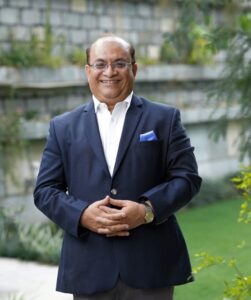The mutual fund was born from a financial crisis that staggered Europe in the early 1770s.
The British East India Company had borrowed heavily during the preceding boom years to support its ambitious colonial interests, particularly in North America, where unrest would culminate in revolution in a few short years.
As expenses increased and revenue from colonial adventures fell, the East India Company sought a bailout in 1772 from the already-stressed British treasury. It was the “original too big to fail corporation” and the repercussions were felt across the continent and indeed around the world.
At the same time, the Dutch were facing their own challenges, expanding and exploring like the British and taking “copy-cat risks” in a pattern that has drawn parallels to the banking crisis of 2008.
Against this backdrop, a Dutch merchant, Adriaan van Ketwich, had the foresight to pool money from a number of subscribers to form an investment trust – the world’s first mutual fund – in 1774. The financial risk to the mainly small investors was spread by diversifying across a number of European countries and the American colonies, where investments were backed by income from plantations, an early version of today’s mortgage-backed securities.
Subscription to the closed-end fund, which Van Ketwich called “Eendragt Maakt Magt” (“unity creates strength”), was available to the public until all 2,000 units were purchased. After that, participation in the fund was available only by buying shares from existing shareholders in the open market. Two subsequent funds set up in the Netherlands increased the emphasis on diversification to reduce risk, escalating their appeal to even smaller investors with minimal capital.
Van Ketwich’s fund survived until 1824 but the vehicle he created is still a hallmark of personal investing more than two centuries later.
The early mutual funds spread were of the closed-end variety, issuing a fixed number of shares. They spread from the Netherlands to England and France before heading to the U.S. in the 1890s.
The first modern day mutual fund, Massachusetts Investors Trust, was created on March 21, 1924. It was the first mutual fund with an open-end capitalization, allowing for the continuous issue and redemption of shares by the investment company. After just one year, the fund grew to $392,000 in assets from $50,000.
 The growth of mutual funds and their impact on investing in general was nothing short of revolutionary. For the first time, ordinary investors with low level of capital could pool their resources in a professionally managed, diversified basket of investments, rather than going the more expensive route of buying individual stocks of varying risks. This was considered a giant step in the democratization of investments for the average person.
The growth of mutual funds and their impact on investing in general was nothing short of revolutionary. For the first time, ordinary investors with low level of capital could pool their resources in a professionally managed, diversified basket of investments, rather than going the more expensive route of buying individual stocks of varying risks. This was considered a giant step in the democratization of investments for the average person.
It is estimated in the United States, there were 9,356 mutual funds in 2017, managing assets worth approximately $18.75 trillion. The Indian Mutual Fund AUM has also grown to $350 Billion, out of which the Equity portion has grown to more than $ 90 Billion with a SIP book of close to $ 1 Billion.
Over the years, Mutual funds have evolved as the investment asset class of choice, for retail investors, due to the tremendous advantages it offers as compared to any other asset class. The most obvious advantages, which have been written by almost every author, are as follows:
Professional portfolio management.
Streamlined and convenient administration.
Risk management through diversification.
Innovative solutions that meet a range of investment objectives and evolving investor needs.
Opportunities for foreign and domestic investment that may not otherwise be directly accessible to investors.
Liquidity, enabling investors to respond to changes in their personal circumstances.
Access to investing for all types of people, including those who prefer to invest small amounts at regular intervals.
Choice of purchase methods and fee structures, including full service, fee-for-service and do-it-yourself.
Accountability and fairness to investors through strict industry regulation and transparency.
But mutual funds offer one big benefit that makes a big difference to investors and leaves all other asset classes in the dust. That feature is liquidity.
Open-end mutual funds are the only investment product where the issuer offers to buy back your entire investment at a transparent price whenever you require, and credit your account within 1-3 working days. No other asset class can match this feature of any time liquidity. We have all experienced the property market, where any immediate or distress sale may not happen or may only happen at a major discount to market valuations.
Jewellery sale also entails suffering a 20-30 per cent discount towards poor caratage, making charges and wastage levied by the jeweller. You may also not receive cash and may have to buy new Jewellery in exchange.
Most other products like Endowment insurance policies, ULIPs, PPF, FDs etc. come with stiff lock in, exit loads, strict rules, end purpose disclosures and many such disadvantages in case you want to encash before term or in a hurry.
The only other product, which offers you liquidity, is a Savings Bank account, but that can hardly be classified as investment.
Liquidity is important because it gives you flexibility and offers you options to optimize your returns and encash opportunities, which become available from time to time apart from meeting any family emergency. Finally, it is your money and you should decide when and what you do with it without any restrictions and costs.
Many investors believe that forced lock-in periods and high penalties for premature exit are good for them because they inculcate saving discipline and force them to be ‘long-term’ oriented. Long term is good but, we go by the old maxim, the best time to buy is “When you have the money and the best time to sell is when you need the money” And you should be able to sell, at the best price, when you want.
Moreover, Mutual Funds are the only asset class where the buying rate and selling rate is the same, without any hidden costs. Mutual Funds offer you total transparency; you buy and sell at a declared NAV (Net Asset Value). Further more, the rate is the same whether you buy units for / Invest Rs 1000 or Rs 1 Million or Rs 100 million.
Another major advantage of Mutual Fund investment is low-ticket size. An investment in property can only start at multi millions, Gold at tens of thousands or even FDR at a certain minimum size whereas Mutual Fund you can invest with as low as Rs 500 and average your purchase cost through a SIP purchase.
Even when you need money, you can redeem as low as Rs 500. Imagine, you have a property of Rs 1 Million and you need only Rs 100 thousand, which is only 10% of the value.For that you either have to sell the property or take a loan against that for your requirement, a tedious process all said and done. A portfolio of Rs 1 million in mutual funds and you can redeem whatever you require without any hitch.
Mutual funds as an asset class are the most tax friendly and still offer great tax advantage over other asset classes, despite the introduction of 10% long tern capital gains tax.
In todays world, where everyone is looking for convenience; product information, product performance and research detail should be possible at the touch of a button, you should be able to buy, sell, top up anytime, sitting anywhere in the world, at a totally transparent rate, nomination facility should be easily available. All this is possible today, amongst all asset classes, only in a product like mutual funds.
At this juncture, I shall just like to share a story I have heard numerous times by different speakers. An advisor met a 75 years old investor who had invested all his wealth of close to Rs 500 million in mutual funds, an ideal investor for an advisor. On being asked the reason for the same, he replied, “I have done it because I want a peaceful death”. The advisor had heard about a peaceful life but not peaceful death. On being queried further, the 75-year-old investor replied, “I Have two grown up children, who are settled in different cities and countries and are busy with their own life. I just want that when I move on, my children should have no hassle in settling my legacy and should be able to share it without any hassle at a totally transparent value without the one accusing the other of having got a raw deal.” He further added that, “I don’t want that there should be any distress sale of my assets because my children don’t have time and knowledge to liquidate the assets at the best possible value.” He went on to say, “The nominations are in place, they will just need to upload the death certificate and the assets will be transferred. Knowing all this, I can die I peace, that all my life’s effort and savings have not gone in vain and wasted in court battles and other conflicts.”
Need we say more, for a moment, lets just forget superior returns that mutual funds provide in the long run, the above factors alone are sufficient reason for investors to opt for mutual funds as an asset class.
Consult your financial advisor today and start your investment journey.
Happy Investing!!
Stay Blessed Forever.
Kindly check our earlier blog on a similar subject : Investment Lessons from Mythology at https://sahayakgurukul.blogspot.com/2019/03/investment-lessons-from-mythology.html OR https://www.sahayakassociates.in/resources/our-blog/2553-sahayak-associates/sahayak-associates-blog/8435-investment-lessons-from-mythology
Note: All information provided in this blog is for educational purposes only and does not constitute any professional advice or service. Readers are requested to consult a financial advisor before investing as investments are subject to Market Risks.
About The author

Sandeep Sahni
After completing his schooling from St. Johns, Chandigarh (Class of 1980) and Modern School, New Delhi, (Class of 1982) Sandeep did his B. Com (Hons.) from Shri Ram College of Commerce, Delhi University (Class of 1985)
Sandeep is an alum of IIM Lucknow with a Post Graduate Degree (MBA class of 1988).
He has also written two books, ‘Dear Son, Life Lessons from a Father’ on the teachings of Life https://www.amazon.in/dp/1637815271 and the Second book which he has Co Authored titled, ‘What My MBA Didn’t teach me about Money’ on the Human and Financial perspective of money. https://www.amazon.in/dp/1637816502
He has a rich work experience and started his career as a corporate man with Asian Paints after IIML. He has a rich experience covering the FMCG, Food Distribution, Cold Chain, Logistics, and Hospitality Industries. He is currently in the Wealth Management and Personal Finance domain. He has a passion for finance and is an active speaker on topics in finance. The stories he narrates strike a chord close to his heart, as they are based on events from his own life. He believes in a holistic view of Personal Finance.
Sandeep’s investing experience and study of the Financial Markets spans over 30 years. He is based in Chandigarh and is advising more than 500 clients across the globe on Financial Planning and Wealth Management.
He has promoted “Sahayak Gurukul” which is an attempt to share thoughts and knowledge on aspects related to Personal Finance and Wealth Management. Sahayak Gurukul provides financial insights into the markets, economy and Investments. Whether you are new to the personal finance domain or a professional looking to make your money work for you, the Sahayak Gurukul blogs and workshops are curated to demystify investing, simplify complex personal finance topics and help investors make better decisions about their money.
Alongside, Sandeep conducts regular Investor Awareness Programs and workshops for Training of Mutual Fund Distributors, and workshops and seminars on Financial Planning for Corporate groups, Teachers, Doctors and Other professionals.
Through his interactions and workshops, Sandeep works towards breaking the myths and illusions about money and finance.
His passion has driven him towards career counselling for young adults and mentoring the youngsters on achieving their life goals and becoming “Successful Humans”
He also writes a well-read blog; https://sahayakgurukul.blogspot.com
He has also conducted presentations, workshops and guest lectures at professional colleges and management institutes for students on Financial Planning and Wealth Creation.
He can be reached at:
+91-9888220088, 9814112988,
sandeepsahni@sahayakassociates.in
Follow on:
www.sahayakassociates.in,
www.facebook.com/sahayakassociates,
www.twitter.com/sahayakassociat,https://www.instagram.com/sahayakassociates/
https://sahayakgurukul.blogspot.com, https://www.sahayakassociates.in/resources/our-blog









